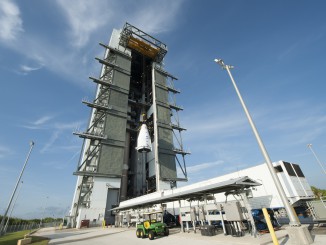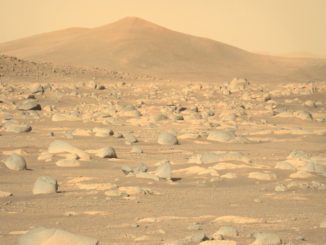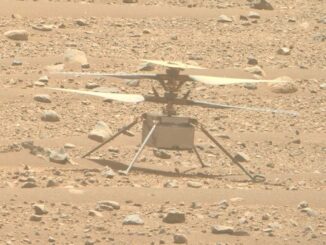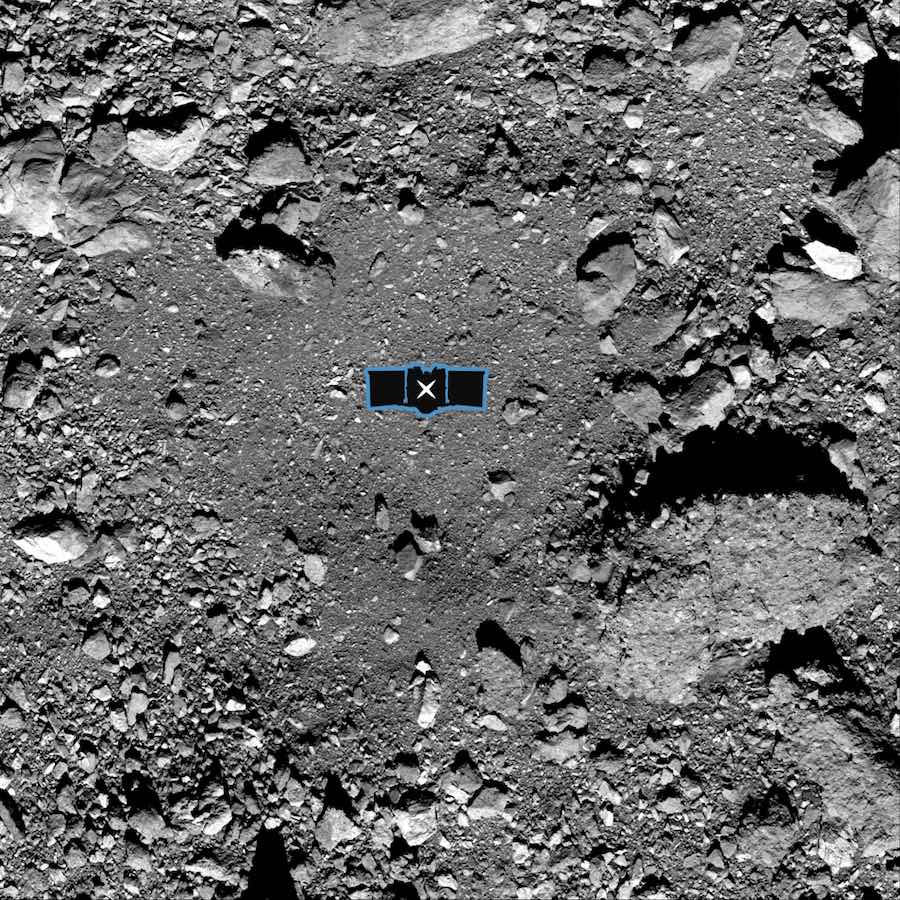
Using precise autonomous navigation algorithms, NASA’s OSIRIS-REx spacecraft will descend to the surface of an asteroid next year, aiming to retrieve rock specimens for return to Earth from a gravelly pit flanked by hazardous boulders, scientists said Thursday.
Scientists announced Thursday the selection of primary and backup sampling sites on asteroid Bennu, a 1,614-foot-side (492-meter) object shaped like a spinning top. NASA’s Origins, Spectral Interpretation, Resource Identification, Security, Regolith Explorer spacecraft has been in the vicinity of Bennu last December, circling the asteroid and mapping it with cameras, mineral-sniffing spectrometers and a Canadian-built laser to measure its roughness.
Launched in 2016, the $1 billion mission’s primary objective is to snag at least 2.1 ounces (60 grams) of pristine samples from Bennu’s surface, and return the material to Earth in September 2023 for analysis in sophisticated laboratories, where scientists will search for signs of organic matter and other chemicals critical to the dawn of life.
Scientists’ preferred sampling site, named Nightingale, is located in the northern hemisphere of Bennu, not far from the asteroid’s north pole. A backup site named Osprey is positioned closer to Bennu’s equator.
“This wasn’t an easy decision,” said Dante Lauretta, principal investigator on the OSIRIS-REx mission from the University of Arizona.
Bennu turned out to be more rugged than mission planners expected, and none of the candidate sites on the asteroid are free of boulders, slopes and other hazards to the OSIRIS-REx spacecraft, which was built by Lockheed Martin.
“When we first got there, the most obvious feature that we saw were these abundant very large boulders, and overall a rough and rugged surface very different than what we designed the spacecraft to sample,” Lauretta said. “We were looking at sampling areas that were 25 meters (82 feet) in radius across, and quite honestly I thought it was going to be obvious from the first images where the sample regions were, and that it was going to be a straightforward site selection. And it was nothing of the sort.”
Data collected by OSIRIS-REx’s survey to date provided scientists with topographic 3D maps of the asteroid, and information about the minerals present in different regions of Bennu.
Using machine learning algorithms and crowdsourced image analysis, scientists looked for areas that looked safe for the spacecraft to perform a touch-and-go maneuver to retrieve samples. They came up with a list of 50 potential sampling sites, then narrowed the candidates to 16, eight and then a “final four” for detailed follow-up reconnaissance. Each of the final four sites were named for birds.
In the end, the OSIRIS-REx team selected locations they named Nightingale and Osprey.
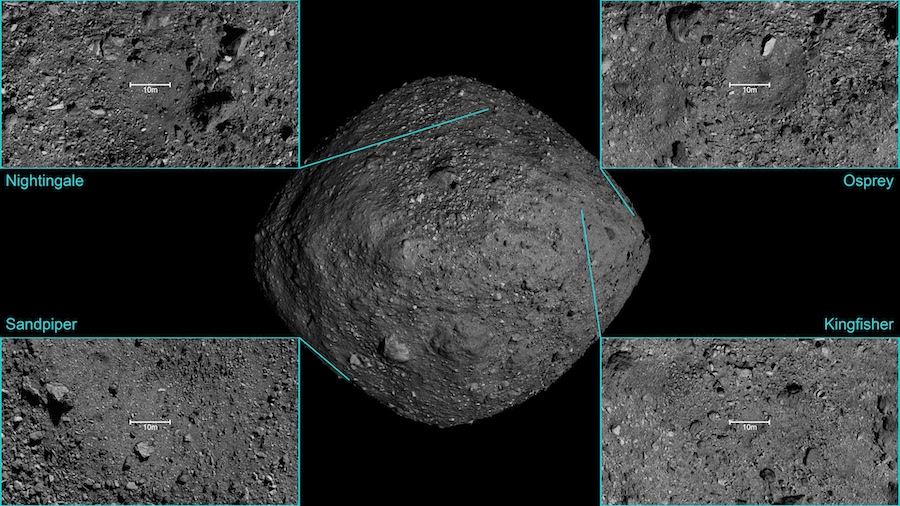
Lauretta said the Nightingale site looks to have an abundance of fine-grained material within the capability of the OSIRIS-REx sampling mechanism. It appears dark, suggesting it might harbor relatively high concentrations of carbon, the building block of organic molecules.
“We recognize that this does have some hazards around it, and so we are doing a lot of work to make sure that we’re targeting the safe regions,” he said Thursday in a presentation at the American Geophysical Union’s Fall Meeting in San Francisco. “But this one really came out on top because of the scientific value. The high latitudes means that it stays relatively cool, and the primary objective of OSIRIS-REx is to bring back organic material and water-bearing material from the early solar system. Being in those high latitudes gives us the best chance to preserve that kind of material.”
The Nightingale site is located inside a 460-foot (140-meter) crater, but the area deemed safe for the spacecraft to touch is 52 feet (16 meters) across. That is about one-tenth the size of the safe sampling area scientists expected before OSIRIS-REx arrived at Bennu.
The spacecraft’s solar panels extend more than 20 feet, or 6.2 meters, tip-to-tip.
“It’s kind of a tight fit,” Lauretta said.
The backup site at Osprey presents fewer navigation challenges, according to Lauretta.
When mission managers give the go-ahead for OSIRIS-REx to perform its sampling run, the spacecraft will break out of its orbit around Bennu and start a carefully-choreographed descent to the surface. Two hold points are planned just above Bennu before the spacecraft proceeds in to retrieve the samples.
A device mounted on the end of the spacecraft’s robotic arm will contact the asteroid surface and fire compressed nitrogen gas. The gas cartridge will disrupt the rock at the sampling site, and the spacecraft will capture some of the material.
“The spacecraft will only make contact with the surface for a few seconds, kind of like it’s bouncing on a pogo stick,” said Mike Moreau, OSIRIS-REx flight dynamics system manager at NASA’s Goddard Spaceflight Center. “It’ll make contact with the surface for a few seconds, fire its thrusters and back away. When the contact is detected, it will fire a nitrogen gas bottle, and that will stir up some of this fine-grained regolith and churn it and capture it in the sample collection ring.”
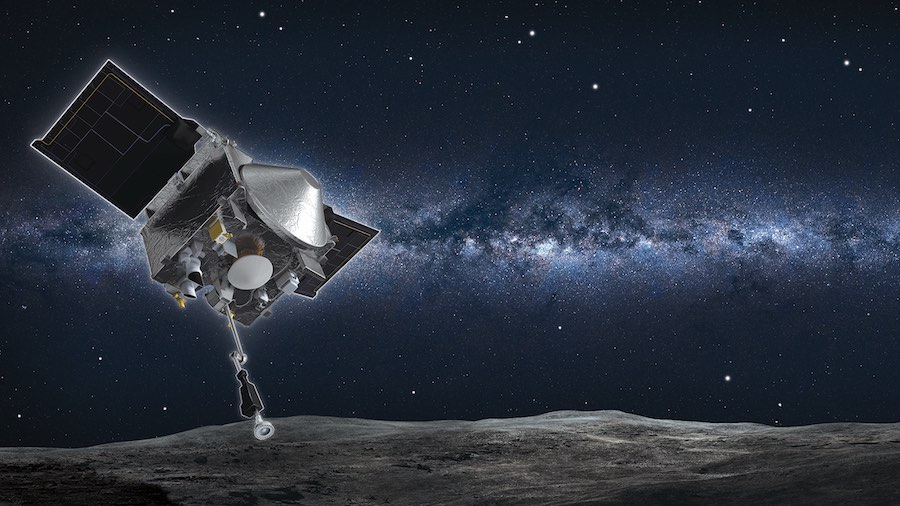
Engineers developed upgraded navigation capabilities to help guide OSIRIS-REx the final phase of the descent to the rugged asteroid. The spacecraft will use a capability called natural feature tracking to take a series of images with a navigation camera to autonomously identify rocks, craters and other markings on the asteroid’s surface, yielding data on position and relative velocity.
“You’ve also got to remember we’re 250 million kilometers (155 million miles) away from Earth,” Lauretta said. “The one-way light time is tens of minutes. Everything happens autonomously on the vehicle, and the spacecraft has to make a lot of intelligent decisions about whether it’s safe to continue down to sample collection.”
A 23-foot-high (7-meter) boulder at the the edge of the Nightingale site has been colloquially nicknamed “Mount Doom.” OSIRIS-REx will need to steer well clear of that hazard.
Managers and penciled in Aug. 25, 2020, as the scheduled date for the first sampling run, following two close-up reconnaissance passes over the Nightingale site and two dress rehearsals.
“What we’re trying to do is essentially navigate the spacecraft down to a location thats the width of a couple of parking spaces and is just a few steps away from a two-to-three story tall building,” Moreau said. “Pretty exciting.”
Email the author.
Follow Stephen Clark on Twitter: @StephenClark1.

